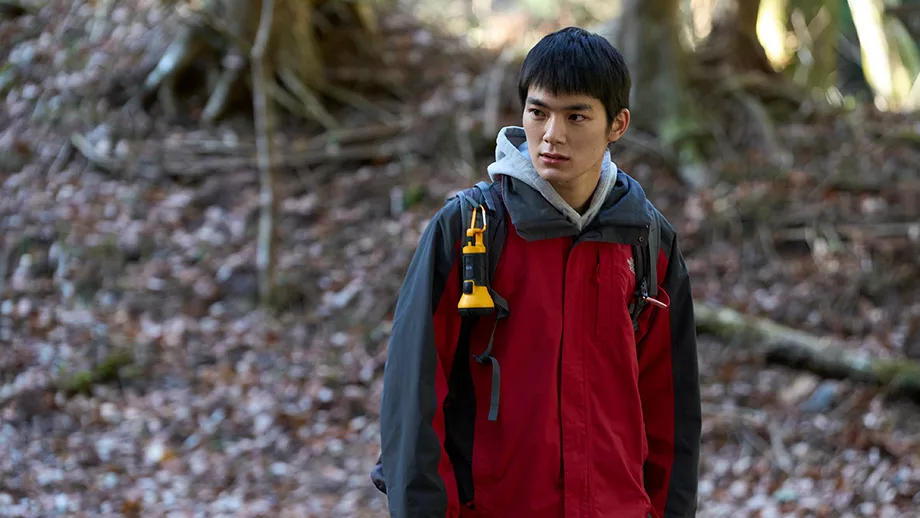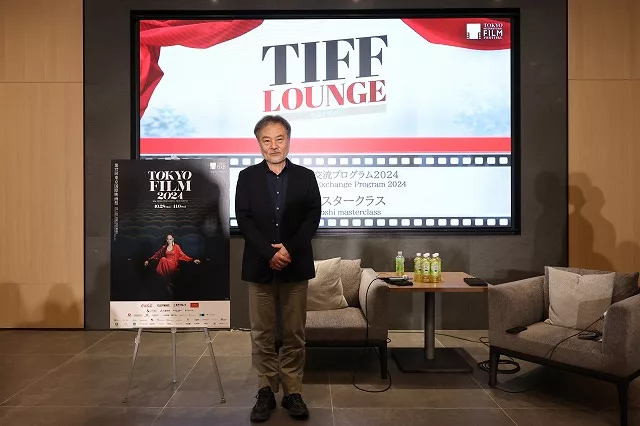Movies
Tokyo International Film Festival 2024: Orang Ikan, Missing Child Videotape, Kiyoshi Kurosawa | Festivals & Awards

At first, I thought maybe the audience didn’t like it. The world premiere of “Orang Ikan” at the Tokyo International Film Festival was scheduled to begin at 11:35 AM, not exactly prime time for a creature feature. But that’s just how it goes at festivals sometimes. And the audience was subdued, barely reacting to gory scenes where the title monster, a humanoid gill-beast in the style of “Creature from the Black Lagoon,” ripped the hearts out of men’s chests and tore a crocodile in half. At the end, there was a round of polite applause.
It was the opposite of genre-festival screenings I’ve been to in North America, where cheering like you’re at a sporting event whenever something outrageous happens is a sign of respect. “Orang Ikan” is solid—there is barely any fat on this 83-minute feature, which chains its WWII-era POW protagonists together by the ankle in the style of “The Defiant Ones.” (Or “Black Mama, White Mama,” for the exploitation crowd.) Director Mike Wiluan worked as a producer on “Monkey Man” and “The Night Comes for Us,” and his movie shares those films’ commitment to gonzo excess. Nothing revolutionary, but a good time at the movies.
And the audience was having a good time. It’s just that loud, excessive public displays are frowned upon in Tokyo, where, as TIFF geared up for its 37th edition, the mayors of Shibuya and Shinjuku banned drinking on the streets for Halloween because locals and foreigners alike were getting a bit too rowdy. (Halloween is new in Japan, a drinking holiday a la St. Patrick’s Day.) It’s not that people here don’t like to have fun: That much is obvious just walking down any street lined with packed pubs on a Friday night. There are just certain places where blowing off steam is encouraged, and a film festival isn’t one of them.
This gets really interesting when this unspoken sense of decorum interacts with films like “Orang Ikan” and “Twilight of the Warriors: Walled In,” another rousing genre selection screening at this year’s TIFF. Directed by Johnnie To protegè Soi Cheang, this action epic is a throwback to noble ‘80s Hong Kong action movies built on the principles of brotherhood, loyalty, and defense of the weak.
The cast is divided into two sets of charismatic action stars: The legends (Sammo Hung, Louis Koo, Richie Jen) and the up-and-comers (Raymond Lam, Phillip Ng). That suits the storyline, which follows a battle for control within the now-demolished slum of Kowloon Walled City right at the point where one generation ages out and a new one comes in. The characters are colorful—a street doctor who sells bootleg porn on the side, a snickering, mulleted villain with supernatural strength and resilience—and the story is engaging, with moments for sincere nostalgia and light comedy. (Tokyo film festival audiences do laugh at jokes—it’s not that tough of a crowd.)
But what really rockets “Twilight” into the stratosphere is the action. As Ng noted in a post-screening Q&A, supernatural martial arts are associated with balletic, fleet-footed wuxia. But “Twilight” combines magical abilities with (sometimes literal) bone-crunching kicks and punches. And the result is exhilarating. Stunt coordinator Kenji Tanigaki was a real cutup on stage, too, making this the liveliest screening I’ve attended so far in Tokyo—even if I did suppress the urge to literally stand up and cheer.

But while audience reactions to genre films vary by region, some sentiments do translate across cultures. Before the world premiere of “Missing Child Videotape,” cast members praised Ryota Kondo’s feature debut as superior to horror films that use loud noises to surprise the audience. “They’re talking about jump scares,” I thought. It’s an idea I’d heard expressed by Western filmmakers many times before, and I was tickled to realize that horror fans all over the world consider that technique, well, rather cheap.
And Kondo’s film is indeed the opposite, an exercise in oppressive dread that builds to almost unbearable levels before ending on the kind of unresolved note that follows you from the film’s cursed mountain setting all the way home. Kondo said in his introduction that he grew up with J-horror films, and the influences of Hideo Nakata (“The Ring,” “Dark Water”), Kiyoshi Kurosawa (“Pulse,” Cure”), and Takashi Shimizu (“Ju-On: The Grudge”) is all over “Missing Child Videotape.” I mean this as a compliment.
This film has many of the signatures of J-horror, including blending urban alienation with ancient terror and found footage with traditional narrative filmmaking. (I am going to be pedantic here and make a distinction between “J-horror,” a movement led by the directors mentioned above, and Japanese horror as a whole.) The yurei (ghosts) hovering in the background, unseen but felt by the terrified characters, are especially effective. You can tell that Kondo has an unshakable belief in the supernatural, allowing for total absorption in the film’s reality.
Shimizu executive produced “Missing Child Videotape,” and the mood at TIFF is hailing Kondo as the next big thing in Japanese horror. The heyday of the J-horror subgenre in the ‘90s and ‘00s has long since passed. And while popular franchises like “The Grudge” still limp along, there is very much room for a new maestro of “horror shows,” as they’re referred to in Japanese, to step up at home and abroad. Anecdotally, I’ve noted an uptick in interest in J-horror among younger cinephiles I know, and I hope to see “Missing Child Videotape” make its international festival debut soon.

One Japanese director who’s especially revered in Western horror circles is Kiyoshi Kurosawa, whose films “Cure” and “Pulse” are the high-water mark for the slow-burning unease Kondo achieves in “Missing Child Videotape.” (The ghost under the stairs in “Pulse” is, for my money, the scariest horror scene ever filmed.) Kurosawa doesn’t just make horror movies, but atmospheric dread is one of his signatures. So I had to ask about it in the Q&A session at his excellent TIFF masterclass, which explored his process and philosophy of filmmaking.
According to Kurosawa, the art of directing is all about knowing when to give up control. “You can be very meticulous about the things you are interested in, but you have to know what you should leave up to the professionals working around you,” he said. “This, I believe, is the work of the director.” He believes that the places where creative visions diverge are “what is most interesting about filmmaking,” and encouraged an audience of film students from across Asia to watch as wide of a variety of films as possible to develop a shorthand for communicating their ideas. Varying your tastes “helps you shapeshift along the way,” he said. “You might start at one point and end at a very different point, but you’ll still be satisfied because you’ll see the potential of what can be.”
Personally, his primary interests are in camerawork and mise en scene, which, to him, are closely tied to location. “For me, what’s most important is location hunting,” he said. “In the screenplay, it’s only words, but when you have the location, you can start to imagine [what it will look like]. He added, “It’s quite an intuitive feeling. but when I find [the right} place, I get this urge to film that place. In the actual shoot there are going to be actors, and you see that place in the background. For me, having that in the frame is very important … The place informs the movement of the actors… when you do this in a real place, an organic place, their movements will be organic as well.”
At the end of the talk, the moderator turned the mic over to the audience. And despite my nervousness—if Kiyoshi Kurosawa called me an idiot in front of a crowd of people, I fear I might never recover—I got up and asked my one most burning question: How does he accomplish that horrifying empty-pit feeling in his films? He thought for a moment, and my stomach dropped for a different reason. Then he gave an answer befitting a master:
“Sound design creates more anxiety than the visuals: The way you construct the sound, that’s something I can be very meticulous about. But the sense of fear or foreboding, I don’t make those clear, actually. Some of you may want to make horror films—here’s a hint from me. It’s not that difficult to make something scary. What is most foreboding is when you don’t know if it’s supposed to be scary or not. When you don’t know what you are seeing, or what that figure [in the frame] is going to be doing … to leave the audience without a definitive answer, that’s what creates tension. if you want audience members to be afraid, don’t try to make them afraid.”
-

 What To Watch4 weeks ago
What To Watch4 weeks agoVenom 3 Ending, Post Credits Scenes Explained: Who Is Knull?
-
!['Venom: The Last Dance' ending, explained: What happened to [redacted]? 83 hero image.fill .size 1200x675.v1729702186](https://www.themearound.com/wp-content/uploads/2024/10/hero-image.fill_.size_1200x675.v1729702186-400x240.jpg)
!['Venom: The Last Dance' ending, explained: What happened to [redacted]? 84 hero image.fill .size 1200x675.v1729702186](https://www.themearound.com/wp-content/uploads/2024/10/hero-image.fill_.size_1200x675.v1729702186-80x80.jpg) Entertainment4 weeks ago
Entertainment4 weeks ago‘Venom: The Last Dance’ ending, explained: What happened to [redacted]?
-

 What To Watch3 weeks ago
What To Watch3 weeks agoA Haunting Meta Doc About Ukraine’s Invasion
-

 Movies4 weeks ago
Movies4 weeks agoBilly Crystal Struggles to Clarify Apple TV+’s Haunting New Horror Series “Before” | TV/Streaming
-

 What To Watch3 weeks ago
What To Watch3 weeks agoNvidia Replaces Intel on Dow Jones Industrial Average
-

 Tech3 weeks ago
Tech3 weeks agoAutumn Internationals 2024 live stream: how to watch rugby union
-

 Entertainment4 weeks ago
Entertainment4 weeks agoM4 Mac mini vs. M2 Mac mini: What are the differences?
-

 What To Watch3 weeks ago
What To Watch3 weeks agoHow Lone Justice Came Together to Create First ‘New’ Album in 38 Years








